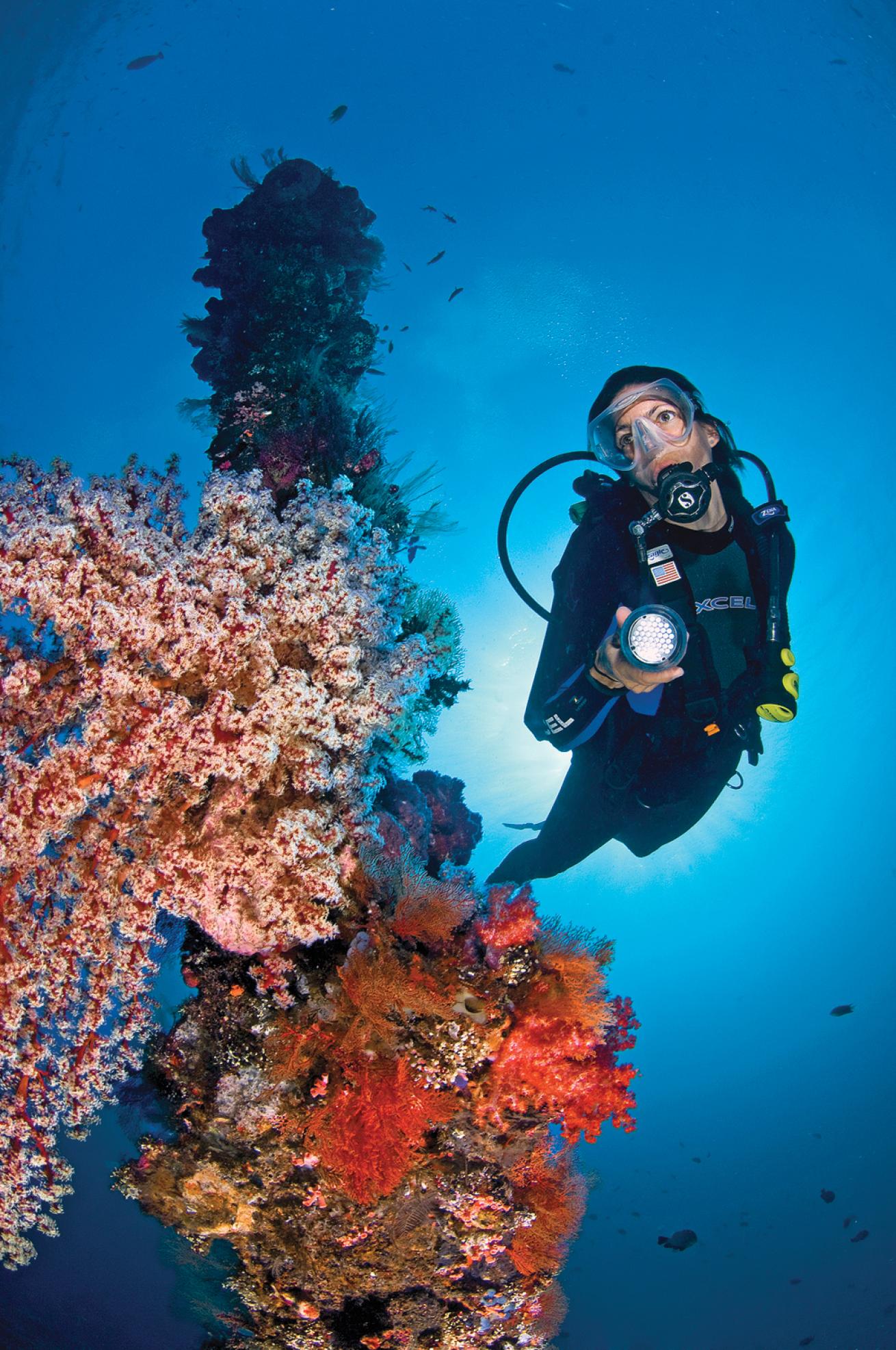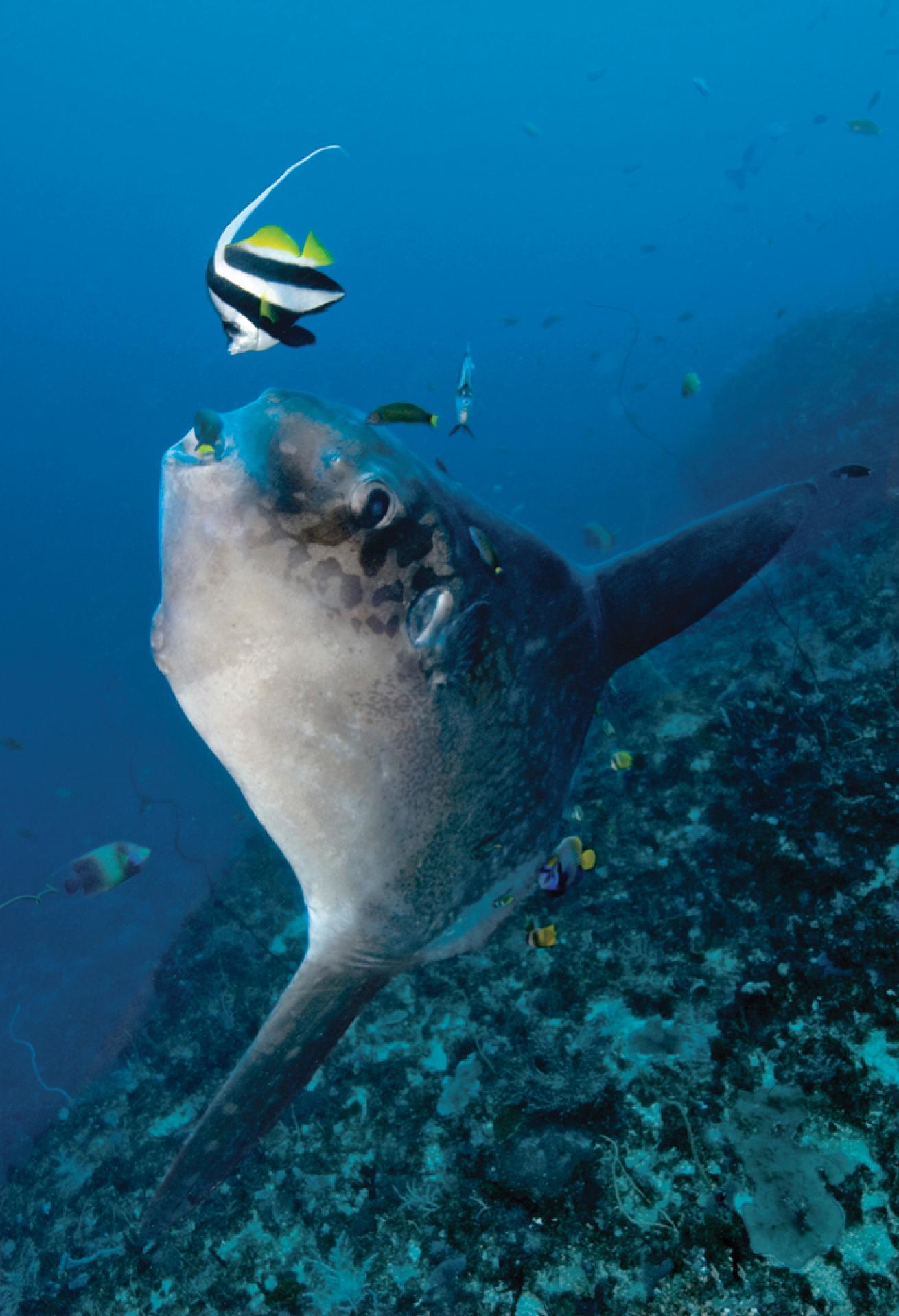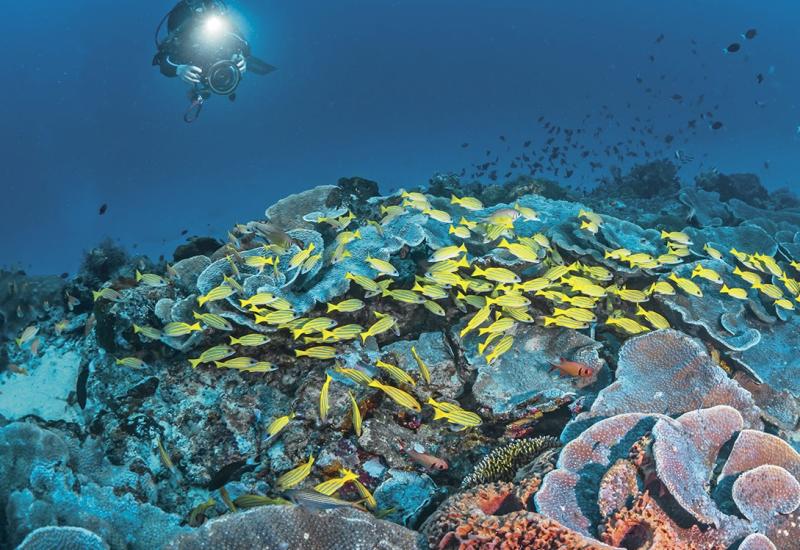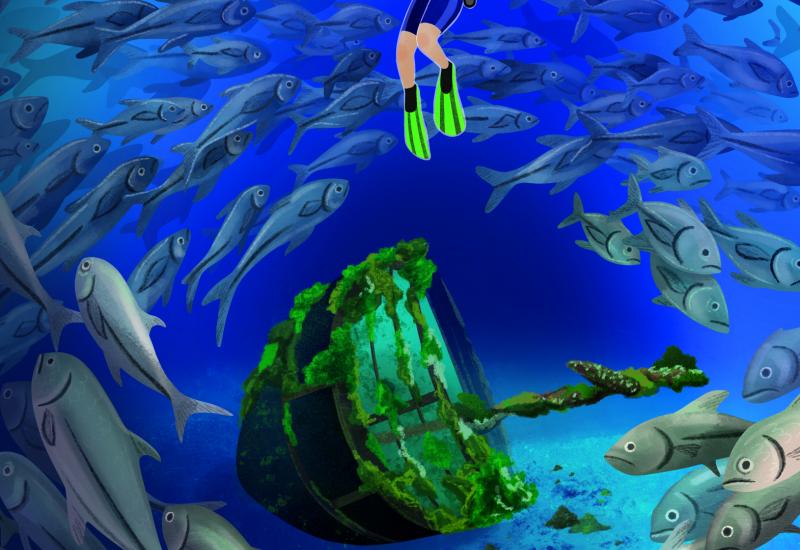Where Oceans Collide - Bali

Fresh fish — ikan bakar — grilled over coconut husks for a few bucks. Temples hopping with monkeys. Looming volcanoes. Rice fields etched with the precision of typewriter lines into the fertile earth. Bali’s attractions are infinite, and the island has earned its status as a top worldwide tourist destination. But for divers who venture to this part of the world, an even deeper travel experience — and a deliciously lonelier one — awaits underwater. The dive crowds know to leave touristy Kuta to the throngs of partiers and transient international surfers, basing instead in more intrepid locales to the north. The Mola mola — the giant ocean sunfish — is Bali’s headiest diving draw. Divers try their luck at spotting this enthralling creature — Mola molas grow as large as 12 feet long and can tip the scales at a couple of tons — during drift dives at Blue Corner at Nusa Lembongan and Nusa Pendida’s Crystal Bay. Thermo clines in this region cause sudden drops in water temperature that have augmented the biodiversity, with thriving swarm fish populations and more intense coral growth here than at other nearby locales. The excellent visibility heightens the experience of spotting high whip coral, egg cowrie and schooling basslets on the reefs of Pendida and Lembongan. But always keep an eye trained on the deep blue too. It’s the cruising ground for pelagic fish, sharks, turtles and, particularly off Manta Point, gentle black giants that wing into your view once and leave you forever mystified.
Sea Oddity Mola mola. The giant ocean sunfish — the heaviest known bony fish in the world — can weigh more than 2 tons and subsists on a diet of mostly jellyfish. To lollygag alongside this strange-looking disc-shaped fish in the deep blue and marvel at its unusual movements is the quintessential Bali diving experience.
At Tulamben on Bali’s northeast coast, land and sea converge in a spectacular setting under the gaze of Mount Agung, Bali’s most sacred mountain. For divers, the pilgrimage point is the wreck of the USAT Liberty, accessed by easy shore dives. The nearly 400-foot-long American supply ship was anchored off the coast of Lombok during World War II when a Japanese torpedo hit it. The U.S. Navy intentionally stranded the ship on Tulamben’s rocky shore to unload its cargo (there were no casualties), and years later, Mount Agung’s eruption pushed the wreck to its present position. Covered in soft and stone corals, the ship teems with life, including myriad reef fish and the occasional huge barracuda. Continue west along Bali’s north coast and you’ll reach Menjangan Island National Park, where Bali’s steepest wall dives deliver the richest diversity of gorgonian fans — with the schooling fish and colorful coral backdrop, it’s a photographer’s paradise. And the mecca for macro lovers is nearby at Secret Bay, where muck diving yields such treasures as nudibranchs, gobies, dragonets, frogfish, seahorses, pipefish, flatworms and more. — Terry Ward
Need to Know
Travel Tip: If the surf’s up and you’ve got a down day from diving, snag a perch at the cliffs overlooking Uluwatu on the Bukit peninsula (some seats are literally carved into the rock), where a spectacular wave-riding show unfolds at the point break below. When to Go: Year-round, but April through October offers the best chance for spotting Mola molas. Getting There: Flights to Bali (Denpasar, DPS) from Los Angeles connect in major Asian destinations including Singapore, Tokyo and Taipei. Check Continental (www.continental.com) and Qantas (www.qantas.com) for flight info. Operators/Accommodations: Bali Diving Academy (www.scubali.com) and Tauch Terminal Resort Tulamben (www.tulamben.com) Dive Conditions: Visibility ranges from 90 to 120 feet, with water temperatures averaging 77°F in Lembongan and Secret Bay, and 84°F in Tulamben. Price Tag: At Tulamben, three-night packages with unlimited dives (including one night dive) start at roughly $400 per person. Bali Diving Academy offers three-night packages with six dives around Nusa Lembongan from $350 per person.

Fresh fish — ikan bakar — grilled over coconut husks for a few bucks. Temples hopping with monkeys. Looming volcanoes. Rice fields etched with the precision of typewriter lines into the fertile earth. Bali’s attractions are infinite, and the island has earned its status as a top worldwide tourist destination. But for divers who venture to this part of the world, an even deeper travel experience — and a deliciously lonelier one — awaits underwater. The dive crowds know to leave touristy Kuta to the throngs of partiers and transient international surfers, basing instead in more intrepid locales to the north. The Mola mola — the giant ocean sunfish — is Bali’s headiest diving draw. Divers try their luck at spotting this enthralling creature — Mola molas grow as large as 12 feet long and can tip the scales at a couple of tons — during drift dives at Blue Corner at Nusa Lembongan and Nusa Pendida’s Crystal Bay. Thermo clines in this region cause sudden drops in water temperature that have augmented the biodiversity, with thriving swarm fish populations and more intense coral growth here than at other nearby locales. The excellent visibility heightens the experience of spotting high whip coral, egg cowrie and schooling basslets on the reefs of Pendida and Lembongan. But always keep an eye trained on the deep blue too. It’s the cruising ground for pelagic fish, sharks, turtles and, particularly off Manta Point, gentle black giants that wing into your view once and leave you forever mystified.
Sea Oddity Mola mola. The giant ocean sunfish — the heaviest known bony fish in the world — can weigh more than 2 tons and subsists on a diet of mostly jellyfish. To lollygag alongside this strange-looking disc-shaped fish in the deep blue and marvel at its unusual movements is the quintessential Bali diving experience.

At Tulamben on Bali’s northeast coast, land and sea converge in a spectacular setting under the gaze of Mount Agung, Bali’s most sacred mountain. For divers, the pilgrimage point is the wreck of the USAT Liberty, accessed by easy shore dives. The nearly 400-foot-long American supply ship was anchored off the coast of Lombok during World War II when a Japanese torpedo hit it. The U.S. Navy intentionally stranded the ship on Tulamben’s rocky shore to unload its cargo (there were no casualties), and years later, Mount Agung’s eruption pushed the wreck to its present position. Covered in soft and stone corals, the ship teems with life, including myriad reef fish and the occasional huge barracuda. Continue west along Bali’s north coast and you’ll reach Menjangan Island National Park, where Bali’s steepest wall dives deliver the richest diversity of gorgonian fans — with the schooling fish and colorful coral backdrop, it’s a photographer’s paradise. And the mecca for macro lovers is nearby at Secret Bay, where muck diving yields such treasures as nudibranchs, gobies, dragonets, frogfish, seahorses, pipefish, flatworms and more. — Terry Ward

Need to Know
Travel Tip: If the surf’s up and you’ve got a down day from diving, snag a perch at the cliffs overlooking Uluwatu on the Bukit peninsula (some seats are literally carved into the rock), where a spectacular wave-riding show unfolds at the point break below. When to Go: Year-round, but April through October offers the best chance for spotting Mola molas. Getting There: Flights to Bali (Denpasar, DPS) from Los Angeles connect in major Asian destinations including Singapore, Tokyo and Taipei. Check Continental (www.continental.com) and Qantas (www.qantas.com) for flight info. Operators/Accommodations: Bali Diving Academy (www.scubali.com) and Tauch Terminal Resort Tulamben (www.tulamben.com) Dive Conditions: Visibility ranges from 90 to 120 feet, with water temperatures averaging 77°F in Lembongan and Secret Bay, and 84°F in Tulamben. Price Tag: At Tulamben, three-night packages with unlimited dives (including one night dive) start at roughly $400 per person. Bali Diving Academy offers three-night packages with six dives around Nusa Lembongan from $350 per person.










